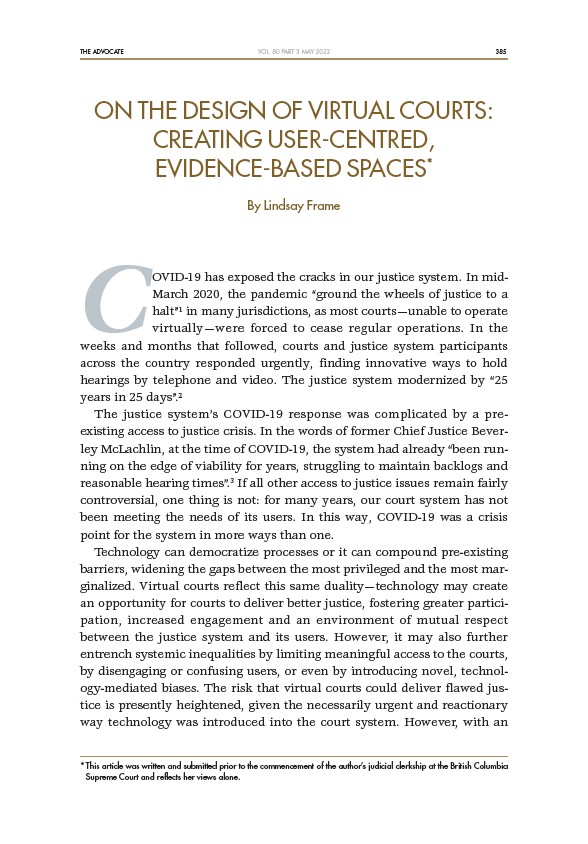
THE ADVOCATE 385
VOL. 80 PART 3 MAY 2022
ON THE DESIGN OF VIRTUAL COURTS:
CREATING USER-CENTRED,
EVIDENCE-BASED SPACES*
By Lindsay Frame
COVID-19 has exposed the cracks in our justice system. In mid-
March 2020, the pandemic “ground the wheels of justice to a
halt”1 in many jurisdictions, as most courts—unable to operate
virtually—were forced to cease regular operations. In the
weeks and months that followed, courts and justice system participants
across the country responded urgently, finding innovative ways to hold
hearings by telephone and video. The justice system modernized by “25
years in 25 days”.2
The justice system’s COVID-19 response was complicated by a pre-
existing access to justice crisis. In the words of former Chief Justice Beverley
McLachlin, at the time of COVID-19, the system had already “been running
on the edge of viability for years, struggling to maintain backlogs and
reasonable hearing times”.3 If all other access to justice issues remain fairly
controversial, one thing is not: for many years, our court system has not
been meeting the needs of its users. In this way, COVID-19 was a crisis
point for the system in more ways than one.
Technology can democratize processes or it can compound pre-existing
barriers, widening the gaps between the most privileged and the most marginalized.
Virtual courts reflect this same duality—technology may create
an opportunity for courts to deliver better justice, fostering greater participation,
increased engagement and an environment of mutual respect
between the justice system and its users. However, it may also further
entrench systemic inequalities by limiting meaningful access to the courts,
by disengaging or confusing users, or even by introducing novel, technology
mediated biases. The risk that virtual courts could deliver flawed justice
is presently heightened, given the necessarily urgent and reactionary
way technology was introduced into the court system. However, with an
* This article was written and submitted prior to the commencement of the author’s judicial clerkship at the British Columbia
Supreme Court and reflects her views alone.